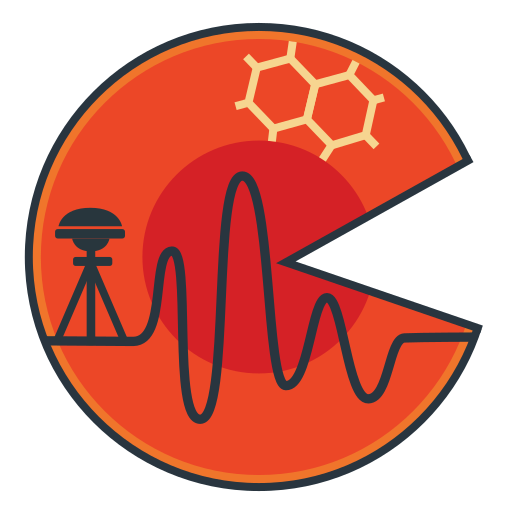Introduction#
The iSTRUM project is a multi-institutional, NSF-funded project devoted to understanding the deformation of Earth materials (rocks) across timescales.
The Earth’s mantle, which sits directly below the crust, is predominantly made of solid rock; yet the solid mantle can flow when pushed or pulled. The rate of this flow depends on the properties of the rock, such as its temperature, and on the nature of the contacts between the tiny mineral crystals that comprise the rock. The mantle can be pushed to flow by numerous different phenomena, such as: passing seismic waves after an earthquake; melting of continental ice sheets and glaciers; the annual cycle of groundwater recharge and extraction; and the draining of large lakes. This study uses observations of these phenomena to measure the rock properties and the interactions between mineral crystals in the mantle beneath three locations: the western United States, Alaska, and Iceland. Meanwhile, laboratory experiments are probing how samples of rock deform under controlled conditions. Finally, new computer models are synthesizing the lab and field observations to understand the underlying physical laws that explain the full suite of data. The results of this study have a bearing on topics that range from predicting how sea level will rise due to melting ice sheets to understanding tidal deformation on Jupiter’s moons. Outreach and training are key elements of the project. Four graduate students and six undergraduate students are being educated over the duration of the project. Workshops will bring together researchers from diverse scientific disciplines to learn and debate about the scientific outcomes and the computer tools developed as part of this study.
There is emerging recognition that the variables describing Earth’s mechanical response to stress, elastic moduli, attenuation, and viscosity, are all frequency dependent. While the end-member elastic and steady-state behaviors are relatively well understood, there remain many fundamental questions regarding the intermediate transient regime. This study is an integrative research and outreach program that combines observational, laboratory, and modeling efforts to measure Earth’s full-spectrum rheological response and illuminate the underlying microphysical processes. Observational work is characterizing frequency dependent upper-mantle dissipation in three locations (western U.S., Iceland, and Alaska) using seismic and geodetic observations of different frequencies but complementary spatial sampling. Experimental work is investigating how dislocations affect transient creep under different temperature and stress conditions and with variable quantities of melt and secondary solid phases. Modeling work is developing new constitutive laws for transient creep and incorporating more sophisticated rheologies in the viscoelastic deformation code. This study is addressing questions about: (1) the broadband mechanical response of the solid Earth; (2) the microphysical processes that control viscoelasticity; and (3) the implications for inferences of steady-state viscosity from geodetic observations and of thermodynamic state from seismic tomography. Broader impacts include training of graduate and undergraduate students, a synthesis workshop that convenes 120 researchers to outline recent advances in understanding transient rheology and to shape the topics and collaborations that will dictate the next decade of inquiry, and development of interactive Jupyter notebooks that introduce open-source data-science tools in the context of seismic attenuation and transient rheology.
Project leads#
iSTRUM brings together researchers from across geoscience disciplines through support of the NSF Frontier Research in Earth Sciences program. The official project title, “Collaborative Research: Towards a new framework for interpreting mantle deformation: integrating theory, experiments, and observations spanning seismic to convective timescales” is a collaborative effort lead by:
- Colleen Dalton, Brown University (lead institution, NSF Award Number 2218542)
- Harriet Lau, Brown University (NSF Award Number 2218568)
- Kristel Chanard, Institut de Physique du Globe de Paris
- Lars Hansen, University of Minnesota-Twin Cities (NSF Award Number 2218305)
- Chris Havlin & Matt Turk, University of Illinois at Urbana-Champaign (NSF Award Number 2217616)
- Benjamin Holtzman, Lamont-Doherty Earth Observatory, Columbia University (NSF Award Number 2218224)
- Zachary Eilon, University of California-Santa Barbara (NSF Award number 2218695)
